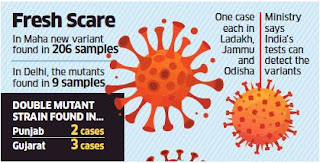A scientific study of the material found during an excavation in Rajasthan has revealed that the Harappan people used to consume high-protein, multigrain ‘laddoos’ (food balls) around 4,000 years ago, which indicates that the inhabitants practised agriculture under good (wet) climatic conditions.
At least seven ‘laddoos’ were discovered in 2017 during the excavation of a Harappan archaeological site at 4MSR (earlier known as Binjor) in western part of Rajasthan (near Pakistan border) between 2014 and 2017.
The study, jointly conducted by the Birbal Sahni Institute of Palaeosciences, Lucknow, and Archeological Survey of India, New Delhi, was recently published in the ‘Journal of Archaeological Science: Reports’ by Elsevier.
“Seven similar big-size brown ‘laddoos’, two figurines of bulls and a hand-held copper adze (a tool similar to an axe, used for cutting or shaping wood) were excavated by ASI at the Harappan site in Anupgarh district of Rajasthan. These food balls, dating back to around 2600 BCE, were found well preserved as a hard structure had fallen in such a manner that it acted as a roof over them and saved them from getting crushed. Had they been broken, the 'laddoos' would have decayed entirely but since these were in contact with the mud, some of the internal organic matter and other green constituents were protected," senior BSIP scientist Rajesh Agnihotri said.
He said the most peculiar thing about these ‘laddoos’ was that when it came in contact with water, the slurry turned purple.
ASI handed over aliquots (samples) of these food balls to BSIP for scientific analysis.
“At first, we thought that these food balls, excavated near the banks of Ghaggar (erstwhile Saraswati), had some connection with occult activities since figurines and adze were also found in close proximity,” Agnihotri said.
“We were intrigued by their shape and size as they were clearly manmade. This curiosity led us to explore their composition. We initially presumed it could be a non-vegetarian food. However, primary microscopic investigations carried out by BSIP senior scientist Anjum Farooqui hinted that these were composed of barley, wheat, chickpea and a few other oilseeds. As the early Indus Valley people were mainly agriculturists, the composition of these food balls with mainly vegetarian items with high protein content made sense,” he added.
The presence of pulses, starch and protein was further confirmed by discovery of significant excesses of magnesium, calcium and potassium. “These laddoos had cereal and pulses, and moong dal dominated the ingredients,” said senior scientist Anjum Farooqui.
Full organic geochemistry of the food balls was later conducted at BSIP and National Botanical Research Institute, Lucknow.
A team of nine scientists and archaeologists from the two institutes concluded that the presence of seven food balls along with typical Harappan tools/items hinted that Harappan people made offerings, performed rituals and consumed multi-nutritive compact ‘laddoos’ as a food supplement for instant nutrition .
The presence of bull figurines, adze and a Harappan seal in the vicinity of these seven food balls signifies that humans revered all these items due to their utility and importance to them. “The study provides important insights into types of food grain used in making food balls, which reveal contemporary farming practices by Harappan people. This scientific finding appears to be unique and opens up avenues for more intrusive scientific research in archaeology to reconstruct the unwritten history of India and its glorious past,” Agnihotri said.
The presence of pulses, starch and protein was further confirmed by discovery of significant excesses of magnesium, calcium, potassium





















